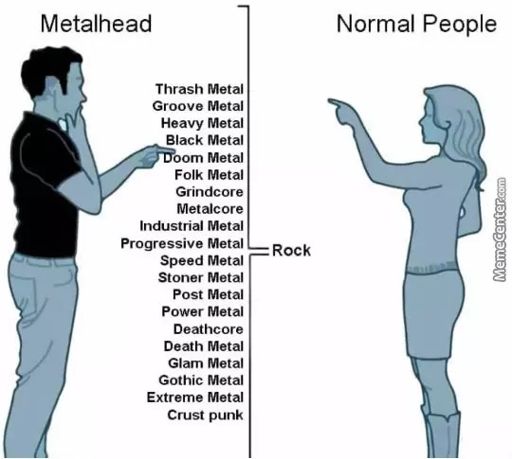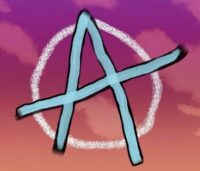Black, then, white are, all the opinions I see when researching thoughts on this album, and Tool, in general. It seems people either praise the band for being innovative masters of their instruments, or for being pretentious and making cerebral, somewhat inaccessible music. In 2001, produced by Volcano Entertainment, Tool released their third studio album, Lateralus, to wide critical acclaim. Although the album was well received, it couldn’t escape complaints of lengthy tracks, heady titles and lyrics, and fans wondering if it was worth the 4 year wait. As someone who was also fairly skeptical about the obsession and fanaticism surrounding this band, stay tuned to read about why I think this album is a masterpiece and an experience that transcends genre and stands on its own as a piece of art.
Is Tool Precious or Pretentious?
Why some might consider them to be so:
Let’s first take a look at some of the reasons people might think Tool to be a bit inaccessible or elitist. I think one large reason is that Tool’s discography wasn’t available for streaming on Spotify or Apple Music until August of 2019! This means the best way to listen to the band was to buy a CD or record and play it on a separate media player than your smartphone. This screamed pretentiousness to critics because it was almost insane to hold out for so long when any other sane musician would jump at the chance to have their art streamed easily worldwide. One reason for his holdout could be that the band intended for their albums to be listened to in one sitting from front to back, but streaming encourages picking and choosing of individual songs. This ruins the cohesiveness Tool tries to have in each album. Ultimately, this barrier to entry promoted elitism among the fans as it became more of an “in-club”. Fans who knew they would enjoy the music had no problem purchasing the records, but potential fans may have been turned off at having to pay an initial cost to perhaps not enjoy the album at all.
When compared to a band like Metallica with only 10ish more years of experience, but double the amount of studio albums, Tool obviously releases music at a slower pace than most. Having released only 5 studio albums and 2 EPs in their 30 year career, this pace of production comes with its own pros and cons. Firstly, as a pro, the long time spent between albums lets the music fully settle in with fans and creates this sense of anticipation where waiting anywhere from 4 to 10 years for an album is normal and worth it. However, it also implies a strong sense of perfectionism in the band, which can be a double-edged sword. The biggest con of this pace has to do with the elitism that comes from this same effect. Fans will insist Tool is the best band ever because it is worth waiting so long for their releases. Furthermore, they will insist that “you don’t know what it was like” to have to wait for the record to come out and stand in line at the store to purchase it and be anxious that you may have wasted your time and money. However, don’t be discouraged if you’re a new fan and are using more modern methods to enjoy their music. “Lateralus” released in 2001, but it didn’t reach triple platinum until 2021, which could have largely been due to allowing it on streaming platforms. What this really means is that there is no wrong time to become a Tool fan, despite what some gatekeeping elitists may say.
As the follow-up to their Grammy award-winning second studio album, “Lateralus” was under a lot of pressure on release to be worth the 4 year wait. Fortunately, the album debuted at No. 1 on the Billboard 200 chart, selling more than 555,200 copies in its first week of release. The album even got its own Grammy for Best Metal Performance for the song “Schism” in 2002. This likely put the band on a pedestal for quite a lot of people, making them seem a little ostentatious. However, a true test of art is if it stands the test of time. According to Besteveralbums.com, the album went from being the 182nd to 178th best album of all time as of 2023 leading into 2025. While this trend may change at the time of this article’s publication, the results imply that “Lateralus” has retained and even resurged in popularity, despite being more than 20 years from release. Therefore, I think it’s fair to say that while their initial acclaim might have earned them a sense of superiority, the music standing the test of time and still attracting new listeners is what really elevates the band.
Between Fart Jokes and Spiritual Transcendence
How Tool cleverly mixes high-brow and low-brow art.

In order to understand how Tool utilizes the concept of the “high-brow” and the “low-brow”, allow me to take you back in time for a second. In the very early 20th Century, these terms became popular as they stemmed from the pseudoscience of phrenology. If you don’t know phrenology, it studied how slight biological differences between ethnicities and other demographics could make some people more intelligent or better suited for manual work. In reality, it was a pretty racist and classist field of study that falsely justified why some people should remain poor lower-class and others deserved to be rich upper-class. Part of their “findings” was that upper-class people had a “higher brow” which gave them the capacity to enjoy the finer things in life, such as scholarly entertainment and refined foods. Vice Versa, lower-class people had a “lower-brow” and were only capable of enjoying less complex and refined things, like fart jokes and junk food. Take a look at the chart above for an idea of what this would’ve looked like some 80 odd years ago. Nowadays, we know this not to be true and that people are capable of enjoying both ends of the spectrum, even combining them together. That is where Tool comes in.
In their second studio album, “Ænima”, Tool had no problem cleverly mixing high-bow art with low-brow humour. This is evident even from the album title and cover. “Ænima” is another portmanteau (combination word) between “anima” which is the latin word for soul, and “enema” which is a medical procedure that uses fluid injections to flush out bowel movements. Furthermore, the cover is most definitely an abstract representation of an anus. Allowing it to function on its own as a critique of the overly abstractness of modern art. These are literally scholarly concepts combined with toilet humour. Although the songs on “Lateralus” are seemingly more high-brow with their reference to concepts in math, physics, religion, and philosophy, there are definitely still low-brow elements mixed in. For example, the track “Mantra” by definition refers to a repeated sound or phrase used in meditation and the track itself is quite the haunting soundscape. Yet, the sound was apparently produced by the band’s singer squeezing their cat. An idea that teeters between genius and idiotic. Therefore, one shouldn’t be too intimidated by how intellectual and esoteric the content of the album may seem, it’s written by musicians who still love a good fart joke.

Now, let’s talk about the absolute monster of a song that is the titular track, “Lateralus”. If someone only had the time to listen to one song from this album, I would recommend this one. This is a song that, even when isolated from the rest of the album, is extremely powerful and moving. “Lateralus” is famously known for including the Fibonacci sequence as the time signature of the song, which furthers the impression that everyone in the band is some kind of genius. To briefly explain, the Fibonacci sequence starts with 0 and 1 and every number that follows is a sum of the two numbers before it. So, the first few numbers in the sequence are 0, 1, 1, 2, 3, 5, 8. Also, If you were to pick any two consecutive numbers in the sequence and divide the higher one by the lower, you would get an answer close to 1.618 which is also known as the Golden Ratio or Divine Proportion as observed in spirals in nature. This is where the concept of the forever outward spiral comes from, as mentioned in the ending lyrics of the song. To best notice this concept used, analyze the rhythm of the first few words of the song. “Black. Then. White are. All I see. In my infancy.” When reduced to groups of syllables comes out to, believe it or not, 1, 1, 2, 3, 5.
What’s even more amazing about the song “Lateralus” is that while the track clearly has the depth to be analyzed mathematically, the lyrics actually scold the listener for doing so. The main point of the song is that overthinking and overanalyzing things numbs your intuition and makes it harder to enjoy things at a base or human level. The song even begins with a sort of heartbeat, as if to make it seem more human. Tool wants you to know that to always search further beyond is to leave yourself blind to what is in front of you. Putting this message on a song that is about a forever expanding spiral is such a tasty irony. Almost as if, in their most serious song, they are asking to be taken less seriously. The irony between the message in the lyrics and complexity of the music is just one reason why this song is an experience to be had. Secondly, the proper integration of the Fibonacci sequence mentioned earlier makes the song extremely immersive. It’s unique and a little jarring at first, but once it clicks, it clicks forever. The band should really be applauded for taking this mathy and unmusical concept and turning it into something pleasant for the ears.
A Genre Transcending Experience
Is it a concept album?
By definition, a “concept album” is an album that is unified by a central theme through composition, instrumentals, and/or a lyrical narrative. “Lateralus” is most definitely connected through composition as the songs frequently lead into each other and with songs like “Eon Blue Apocalypse” and “Mantra” serving as filler pieces or short bridges between ideas. Besides sampling things like a bouncing ball or a complaining cat, the instrumentals all stay pretty consistent throughout the album. Many of the songs begin with a quiet melody or ramping rhythm before a satisfying crescendo with choruses that take permanent real estate in your grey matter.
The hardest case to argue is whether or not the lyrics unite the album with a central theme. While all the songs are loosely about spiritualism and the human experience, you could ask 3 different people what the album is about and get 4 different answers. This is just to say the central theme is incredibly hard to pin down. This is because the lyrics are incredibly open to interpretation and they seem like they could apply to any situation or feeling. So, while it is hard for fans to unanimously agree on one specific theme or narrative, it is easy for each fan to make up their own instead. Off the top of my head, other examples of concept albums I can think of are “American Idiot”, by Green Day and “Welcome To The Black Parade”, by My Chemical Romance. What these albums and other concept albums share, are fans gushing about how wonderful of an experience it is to sit through these albums in one sitting. Instead of fans and critics simply extracting a couple songs and disregarding the rest, each song on the album get their due credit as part of a being a more cohesive piece.
Being centered around a central theme and cohesive idea is perfectly executed by Tool here. The album flows smoothly and in one piece. Songs lead into each other and are best heard within the context of the album. Yet, some songs can still be isolated and sold as singles to pique the interest of new listeners. Another thing to mention is Tool is often known for their creative and disturbing music videos for singles. These function as pieces of art in their own right and they each pull their weight in terms of garnering both intrigue and acclaim. However, the videos aren’t for everyone. The squeamish or easily disturbed might choose to stay away and stick to a solely auditory experience.
At this point, we can confirm that “Lateralus” is a concept album in more ways than one. However, does that make it better than other pieces of music that aren’t? In this case, it doesn’t make it any worse. The point of these concept albums is that while the oneness of the project is obvious, it usually takes more than one listen to fully know the theme or plot throughout the songs. So, if anything, being a concept album just adds more complexity and longevity, giving people reasons to enjoy it beyond the first few listens. Can it seem a bit high-brow and pretentious to create a concept album revolving around philosophy and the human spirit? Maybe. However, the stellar execution totally makes up for the snobby concept.

Unfortunately, I’ve been holding off on discussing what particular genre this album is. More often than not, labels like “Prog-rock” and “Prog-metal” are ascribed to the band’s sound. The “Prog” prefix might intimidate new listeners as it usually implies longer songs, weird rhythms, and cacophonous yelling. The question then becomes; Will the average listener find the music too complex and heavy to enjoy? While the album is sonically loud at moments, it bounces between being meditative and energizing. As mentioned earlier, a lot of the music starts with soft introductions that crescendo into awe-inspiring choruses. However, these swelled-up moments can get a little loud and angry for some. The lyrical content can be a little dark and depressing, but nowhere near violent and disturbing. In my opinion, this album is great to have either in the background or as your main focus. I usually put this album on when I’m cooking or at the gym because I can vary my level of focus in line with the flow of the music. Of course, this is all subjective. Different people have different ears and can tolerate different levels.
I kind of equate heavy music to spice tolerance. I love spice in my food and would prefer to put a little hot sauce on most of my meals, but I almost never order the spiciest thing on the menu and that’s perfectly fine. I would say that this album is then as heavy as a mild buffalo sauce. A bit of kick to it, but extremely tolerable. However, at the beginning I also said that this album transcends genre, but let me explain how. I essentially mean that people should not feel any stigma or reluctance towards hearing the album because of its genre. This is one of those pieces of music I would recommend to anyone with functioning ears and an open mind. It’s not just a “prog-rock” album, it’s a sonic experience that hints towards enlightenment. It’s as simple as just trying the food and seeing if it’s too spicy for you or not. Worst case scenario is you spit out the food and drink some milk, or you turn off the song and listen to something else.
When I started my Tool journey in late 2023, I did not anticipate how highly I would regard this album and how often I would recommend it to anyone who listened. If you go elsewhere online, there is quite the schism regarding opinions on Tool. Many called them pretentious and overrated, creating one of the worst fanbases to exist. As discussed earlier there are many reasons why the band and their fans could be viewed as elitists, but this is only reflective of a vocal minority and not of the band at all. In truth, they are just artists creating art and using music as a tool to convey their message to the world. It is up to their fans to be responsible and not ruin it for other people. On the other hand, I saw an equal amount of people gushing about how unique and talented the band is and I couldn’t resist giving them a try. So to anyone on the fence about diving into this album, don’t be.
Thanks for reading! Be patient and next time we’ll see if the pieces fit.
This album can be streamed on YouTube/Apple Music/Spotify


